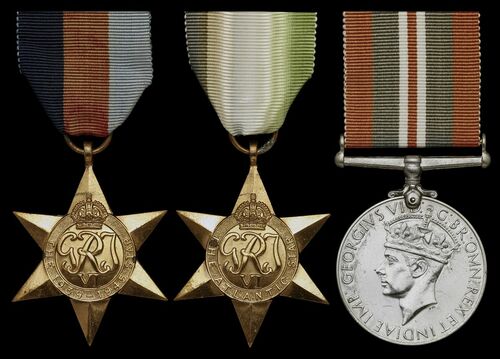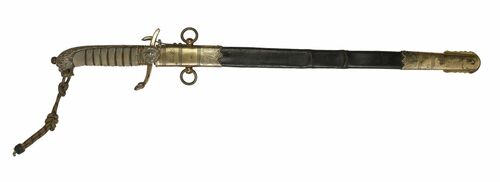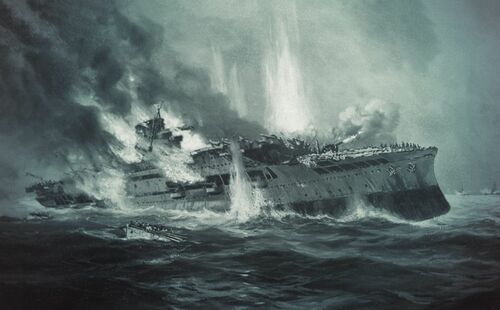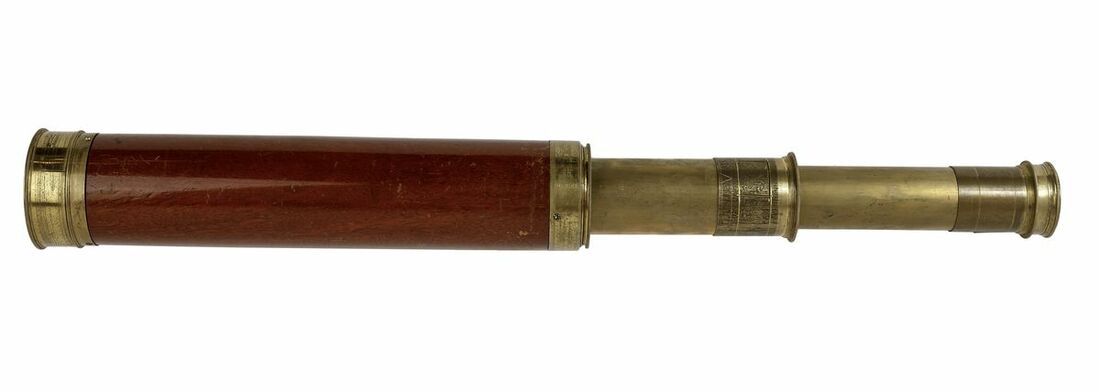Auction: 23003 - Orders, Decorations and Medals
Lot: 217
At 1545 [on 8 June 1940] they [H.M.S. Glorious and her escorts] were spotted by the German battleships Scharnhorst and Gneisenau. With no aircraft in the air to provide an early warning, and despite a heroic, Victoria Cross-nominated defensive performance by the destroyers, escape proved impossible. By around 18:20, the valiant Acasta, last of the British ships still afloat, which had torpedoed Scharnhorst in a last gasp attack, sank, blazing, beneath the waves. Aboard Scharnhorst a film crew recorded the action and Glorious became perhaps the first major Royal Navy ship whose demise was seen in moving pictures, triumphantly displayed to the world only days later on the newsreel 'Die Deutsche Wochenschau'.
Some 900 men went into the cold, northern waters that evening and they faced a horrifying ordeal. Despite saluting their gallant foes, the German battleships did not stop to pick up survivors. The British, on the other hand, unaware that the three ships had been lost until the following day, even continued to radio orders to them until the Germans announced the sinkings. Hour after hour men waited in the water and in open rafts as their shipmates slipped away around them. When Norwegian vessels finally found them nearly three days later, only 40 remained alive. The death toll of 1,519 exceeded any of the other great British naval disasters of the war … '
An article by the naval historian Philip Weir, refers; see History Today, 8 June 2015.
A tragic 'Loss of H.M.S. Glorious 1940' group of three attributed to Lieutenant-Commander C. J. T. Stephens, Royal Navy
1939-45 Star; Atlantic Star; War Medal 1939-45, sold together with a Royal Navy officer's dirk mongrammed with the initials of the recipient, good very fine (3)
Charles John Thompson Stephens was born at Bridport, Dorset on 1 August 1907, the son of Major John and Elsie Stephens of 86 Melrose, St Andrews Road, Bridport.
Pre-War Career
He joined the Royal Navy in 1925 as a Cadet and was appointed Midshipman on 15 September 1925. Seeing his first service afloat with the battleship Warspite, Stephens was promoted Sub-Lieutenant on 1 August 1928 and went ashore for study.
Posted for duty for the first time with the cruiser Devonshire on 3 April 1929 before removing to the sloop Veronica on 24 March 1930, it was with her that he was appointed Lieutenant on 1 May 1930. Stephens continued his career with a promotion to Lieutenant-Commander on 1 May 1938 as the spectre of war loomed over Europe.
Stationed with H.M.S. Glorious on the outbreak of the Second World War he joined her in the abortive Norway Campaign.
Loss of the "Glorious"
During the Norwegian campaign the aircraft carrier H.M.S. Glorious operated alongside her more modern consort, Ark Royal, providing air cover to Fleet units and the Army Expeditionary Force fighting the German invasion ashore. Owing largely to the superiority of Luftwaffe air power and the rapid territorial advances made by the Germans, the British Government decided to evacuate their forces from Norway at the same time as they were forced to do so in France. This was achieved successfully through the efforts of the Royal Navy, including the landing on Glorious of two squadrons of R.A.F. fighters from airfields ashore.
It was during the allied withdrawal that Glorious detached herself from the main naval force in order to undertake an independent passage back to Scapa Flow, albeit with a destroyer escort in the form of Acasta and Ardent. Here, then, was a decision that attracts controversy to this day, in addition to events played out on the carrier itself.
The remainder of the story is one imbued with high courage and tragedy: Glorious and her escorts being intercepted by the German battlecruisers Scharnhorst and Gneisenau, who had put to sea in anticipation of a British withdrawal. In the memorable words of the German lookout who first sighted the Glorious: "I had never seen an aircraft carrier before this moment - then we sank her!"
Unable to escape or fly off any aircraft, Glorious was doomed, and by superb German gunnery she was hit - rapidly and repeatedly - and set on fire, while her escorting destroyers Ardent and Acasta desperately tried to shield her with smoke screens and suicidal torpedo attacks. Both were sunk with guns still blazing defiantly to the last, and one torpedo fired by Acasta struck the Scharnhorst aft, causing serious damage. Subsequently, the German ships gave Glorious the coup de grâce, but did not pick up any survivors and withdrew from the area.
Stephens was posted as missing in August 1940 and it soon became clear that he was not one of the mere 40 survivors of the disaster. He has no known grave but is commemorated upon the Lee-on-Solent Fleet Air Arm Memorial.
Sold together with a nameplate; a two-drawer Naval-style telescope in its original fitted case (drawers rather loose); and a Royal Naval officer's dirk - this of the standard pattern, lion head pommel and white shark skin grip, crown and fouled anchor cartouche upon guard, brass fixtures and fittings and black leather scabbard, the initials C.J.T.S. engraved upon the throat, sword knot present but lacking tassel, guard missing one decorative acorn and blade tightly secured in scabbard.
Subject to 20% VAT on Buyer’s Premium. For more information please view Terms and Conditions for Buyers.
Sold for
£320
Starting price
£60











